Updated: July 3rd, 2023
This article contains affiliate links. Read the full disclosure here.
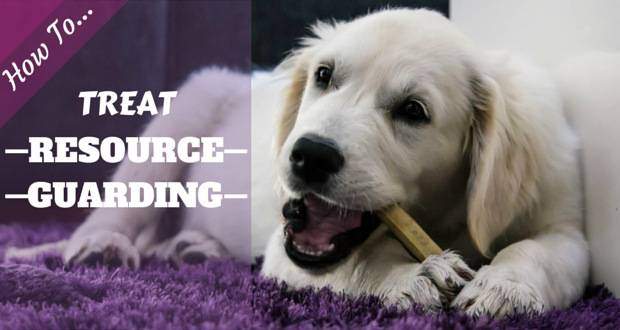
© Depositphotos.com / alvenmod
As a dog owner, the chances are high that you will have borne witness to resource guarding at some point.
It’s time to unravel some of the myths and fears surrounding this very common behavior and take proactive steps to prevent – or cure – it in your dog.
What is Resource Guarding?
Resource guarding is a natural reaction by dogs and puppies to become protective over a resource when they sense a danger it may be taken away from them.
In practical terms, you’ll see your dog stiffen, growl or curl their lip when another dog or human approaches them when occupied with a resource.
The resource itself could be anything your dog happens to value. The most common resource to be guarded is inevitably food although toys, sofas, chews and beds are also not unusual.
Why Do Dogs Guard Resources?
Resource guarding is an innate and natural characteristic that your dog possesses as a throwback from their wild ancestry. It’s a survival technique first and foremost. Your dog wouldn’t be able to survive in the wild if they were unable to protect their food and other valued resources.
Despite your golden retriever being otherwise domesticated, they can still be inclined to resource guard.
The trait will manifest itself in unconditioned dogs as a protective reaction when they anticipate a human or other dog are approaching them in an attempt to compete for and steal their resources.
Resource guarding dogs will react this way regardless of the human’s intention and manner.
Some owners worry that resource guarding is a sign of your dog exerting its dominance or an indication that the dog has been spoiled like a petulant child. That is not the case.
Definitely don’t react by exerting your own dominance over your dog if they resource guard! This will do nothing but reinforce in their mind that they cannot trust humans and they must amp up their protection even further.
How Serious is Resource Guarding? Should You be Worried?
Of course, there are varying levels of resource guarding which show how serious an issue the behavior is with your dog, if indeed it is serious at all.
Guarding against other dogs in the vicinity by throwing dirty looks at them is normal and shouldn’t be a problem. The only time human intervention would be necessary here is if a physical scuffle took place.
Resource guarding can be more serious, however, and alarm bells should ring if your golden retriever begins resource guarding against you or other humans. Now would be the time to start ‘counter-conditioning’ and ‘desensitization’ so your dog learns to love – or at least accept – an approaching hand!
Sometimes Professional Help MUST Be Sought
If you feel that your dog’s resource guarding goes beyond stiffening and low-level growling – for instance, if they launch themself at you with teeth showing – it’s imperative that you escalate the problem to a professional behavioral specialist to avoid your dog causing any injuries.
This is especially important for families with young children!
While adults are able to control and manage our own behavior around dogs, children lack the same self-awareness, which can easily lead to accidents or worse. So professional help should be sought to treat the behavior problem as soon and as effectively as possible.
Can You Just Ignore It?
Just because resource guarding is a common behavioral trait in dogs doesn’t mean you shouldn’t attempt to rectify and counter-condition it.
Although you and your family may well be aware that it’s best to leave Fido alone during mealtimes and hence all of you can stay safe, one of your children’s friends who is visiting may not – cue disaster.
So please don’t ignore the issue! Solve it for the safety of others who may not know not to approach your dog in certain situations.
The Cure? Counter-Conditioning and Desensitization
Fear not – despite resource guarding being a natural behavior trait in many dogs, it is still possible to condition your pup to abandon this attitude.
As with all animal training, prevention is always preferable to cure. When it comes to puppies, it’s best to begin right away with conditioning against resource guarding.
For older dogs, counter-conditioning and desensitization are the answer. Scary sounding technical terms, but don’t fret, however. The process isn’t too hard to follow for mild cases of resource guarding and older dogs and newly adopted dogs will receive some benefit from anti-resource guarding conditioning.
However, the key here is ‘mild cases’. For serious cases, professional help is the only way. Attempts at tackling the issue by an inexperienced trainer can result in bite injuries and perhaps your dog being taken away, maybe even euthanized.
QUICK RECOMMENDATION: My puppies have drawn blood with their teeth many times. The Milunova Pupr Pals™ Dog Toy is a plush squirrel puppet toy that helps to protect your hands from those sharp puppy teeth during play.
How To Treat Resource Guarding In Your Golden Retriever?
Most sources recognize that the key to stopping resource guarding is conditioning your dog to believe that the problem they expect – an approaching human – is actually not a problem at all. Rather, an approaching human is actually a precursor to something good – like a treat, for instance.
If your dog is resource guarding their food – the most common form of guarding – you will need to instil in them the knowledge that food comes from you and is infinite. This will translate in their mind that your approach is indicative of even more delicious food being supplied.
As with all animal training, conditioning is not a quick fix that will produce immediate results. It is a gradual process whereby you slowly build up your dog’s comfort levels to a point where they will not feel the need to resource guard against you or other humans.
Hand Feeding
Hand feeding is recommended as a powerful method to encourage your dog to trust you and recognize you as their primary food source.
If you can, begin hand feeding as soon as you receive your dog as a puppy, at least once a day for a few weeks.
This will teach your puppy or dog to accept your hand near their food, and goes a long way to prevent food guarding problems from ever beginning.
Use A Small Portion of Their Dinner as a Training Reward
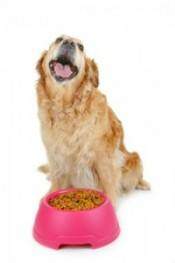
© Depositphotos.com / studioM
Another method, and one more suitable for older dogs as well as puppies, is that of rewarding them with extra food at mealtime for following a command.
This way they get the feeling once again that you are the source of good things, but also that they can earn extra food.
This technique is a small part of the ‘nothing in life is free’ protocol or what Ahimsa dog training terms rather more nicely as the ‘Say Please protocol‘.
Just before meal time, set aside a few chunks of food from their bowl and hold a short training session where they are given a small piece of food for following your commands correctly.
Alternatively, hold it back to be given to them part way through their meal as a bonus reward when you ask for a behavior such as a ‘sit’ during the time they are eating.
You can also use their food bowl itself as both a reward and an indicator of you as their food provider. When your pup approaches you for food at each mealtime, ask them to sit and only then, once they obey, bring the bowl down to them, release them from a sit, give praise and allow them to eat.
Add Bonus Treats To Your Dog’s Bowl Part Way Through Eating
Another useful pointer is to keep a small store of little leftover ‘human food’ in your fridge that you’re sure your dog will fancy.
When your dog is eating, take one of these little leftovers and drop it into their bowl as a bonus treat. Again, your dog will begin to link together that you are the provider of treats and food.
It’s also a great idea to get the whole family involved in this trick, taking turns to add bonuses at different meal times so that your dog trusts all of you and recognizes you are all the source of their food. It’s no use if your dog stops resource guarding against you but still does against your kids!
Do remember though you must supervise children at all times, especially when they’re participating in these training exercises, but do get them involved!
Anyway, by somebody – anybody – passing by as your dog is eating and dropping some small but high value food into their bowl, it won’t take long for your dog to think that an approaching human and human hand during meal time is a great thing. Every time it happens, their dinner gets increased in size and upgraded with something a little tastier!
Warning! Extreme Caution is Needed With This Technique!
If when you go to your dog while eating, to attempt dropping an extra tasty treat in there, they give a death stare and begin growling, it’s NOT a good idea to keep moving forward.
Resource guarding is an emotional response, they cannot help it, but every time they get into the aroused guarding state, the problem is reinforced. Especially because each time it happens, it works. They growl and guard, you move away and it confirms their fears.
So if, when you approach, they guard strongly, simply drop the treat and move away. And of course if your dog acts this strongly, DO NOT get children involved in the training.
For future sessions, try throwing the treat from a greater distance, a distance at which they do not resource guard against you. And slowly, over days and weeks, try getting closer and closer, just a foot at a time.
If there isn’t a safe distance, or after trying this (and other techniques above) you cannot get any closer, then the problem is too great for you. Seek professional help.
Further Anti- Resource Guarding Training Tips
Not all resource guarding is over food. It can be over anything your dog loves and wants for their own that they fear could be taken away.
It could be favorite toys, their bed, even having to share the attention of a family member.
Following are tips to help with guarding of other resources that aren’t food related. You can still use the ideas above and transpose them to the situation you’re in, bu these extra tips will also help.
For Resource Guarding Toys, Chews or Other Objects – The “Give” Cue

© Depositphotos.com / pitrs10
The most obvious training cue to teach when it comes to resource guarding is the “give” or “drop” cue.
You give the cue and your pup will duly drop whatever it is he happens to be occupied with. This is the end goal. This is how you get there…
As always with dog training, start small and don’t try to move mountains straight from the off.
When you see your dog with a chew or toy that they regard as low-value (not their most treasured or favorite resource), approach them with a high-value treat (a piece of chicken, for example) and give the cue: “give”.
If they haven’t yet learned the response, guide them to it by placing the high-value treat near their mouth. They will naturally have to drop their toy to accept the treat.
Remember to praise once they get this right and return their toy to them as soon as they have finished the treat. This will increase their comfort and trust level and reduce their competitive resource hoarding.
Ahimsa Dog Training recommend that you begin the training with the family member your pup trusts the most, particularly if they are a severe resource-guarder.
As always, children must be under supervision when training a resource guarding puppy or dog for their own safety. And only allow them to start getting involved once your dog has shown solid progress with you and other adults.
As mentioned before, this is a gradual process and not an overnight quick-fix solution. Build up your dog’s comfort levels for a few days before moving on to the “give” cue with higher value toys and chews. Slow and steady will always win the race when it comes to dog training.
For Resource Guarding Beds, Sofas and Chairs – The “Off” Cue
 © Depositphotos.com / grki
© Depositphotos.com / grki
Another relevant cue worth teaching to a resource guarding dog is quite simply “off”. Particularly useful if they guard a sofa or bed.
Just as with the “give” cue, it’s best to use treats as a reward and persuasion tool.
Ahimsa Dog Training recommend to make sure your dog has only just got onto the bed or sofa when you try this cue as it won’t work if they’re already settled.
When you see them jump on, give the cue – “off” – and lure them down by putting a treat on the floor. Remember to praise (and use a clicker at this point if that is part of your normal training regimen.)
If they don’t comply and get off to get the treat, lure them down by holding the treat right under their nose with a closed fist, then lowering the treat down toward the floor and then along it so they follow. As they get off the furniture, give the “off” cue.
If it still doesn’t work, try with a higher value treat, not after they’ve already eaten and in fact it’s most effective just before meal time when they’re hungriest.
Also, it’s a good idea to NEVER let them on your furniture without your say so and after you giving a cue, and only as an occasional or nightly treat (not during the day).
This will reinforce in their mind that it’s not theirs to guard anyway, and that you are the provider of their comfort for which they should be grateful.
Adapt To Your Dog’s Pace
As with all training, it’s incredibly important to make sure that you work at a pace your dog is comfortable with. The training is intended to increase their comfort and trust, after all!
If you’ve been making good progress with the “give” cue on lower value resources and decide to move up a level to cue your dog to give higher value resources, don’t be disheartened to move back a step if your dog begins resource guarding.
Retreat back to the same routine with a lower value resource and then try again in a few days, after more success at the earlier, easier level for your dog.
Maintenance
At some point, your training and hard work will have paid off; your pup’s trust levels will be high and his resource guarding no more.
Once you’re at this point, it’s time to phase into the maintenance period of their training. It’s recommend that you scale back to practicing the cues twice a week at first, gradually easing up to just once or twice a month.
If your dog does show signs of regressing back into resource guarding, you’ll need to go back and repeat the training again, making an extra effort to keep up the cues during the maintenance phase.
The maintenance routines should be practices and abided by throughout your dog’s life in order to ensure their good behavior continues. Things are easily forgotten if they aren’t continually practiced reinforced.
Final Thoughts
Resource guarding is a natural, instinctive behavior. So don’t think your dog bad if they do this. However, it’s in everyone’s best interests to treat the behavior.
For mild cases of resource guarding, try the training exercises described above to build trust in your golden retriever that you are the source of all things good, and that what they think could be taken away is in fact in plentiful supply and you will always make sure they have lots of it.
Get everyone involved – people living in your house and even visitors – so they learn to trust everybody and guard against noone. However, be very careful with getting children involved. Only in mild cases and under strict supervision.
Finally, for any severe cases or even if you’re simply unsure, seek the help of a professional. Never put yourself or anyone else in danger, never force your dog to go past their comfort levels to where they feel they have to bite. You can be hurt and may have your dog taken away.

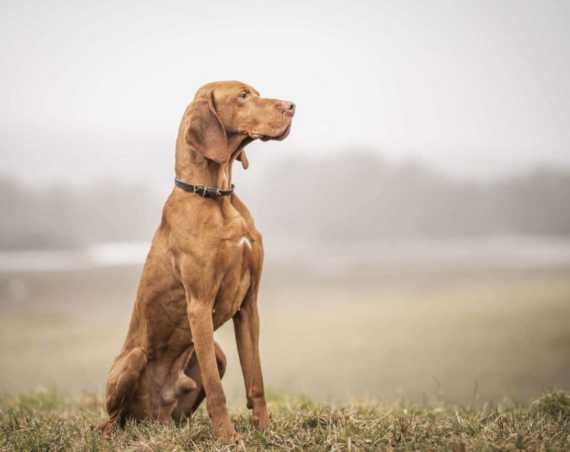
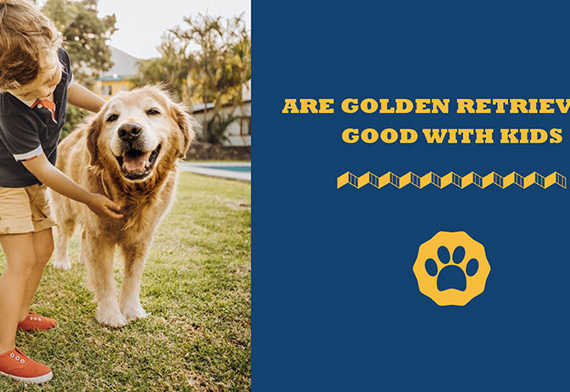
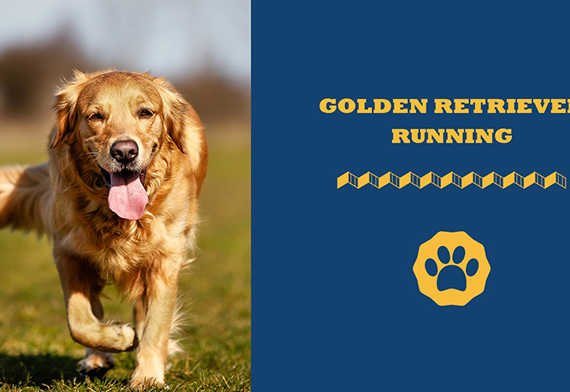
2 Comments
Lindsay Pevny
Great post, it’s so true – guarding is a dog’s natural instinct, and they need to learn to trust you and learn good manners around food and comfy spots. I love using the dogs’ meals for training, sometimes I completely feed them by hand, letting them have a bunch when they do really good, so it doesn’t take forever to feed them.
Wendy
Hand feeding is definitely a good thing, best started early while still a puppy too so they never learn to really guard in the first place!
Cool looking site, Lindsay. lots of good info there 🙂